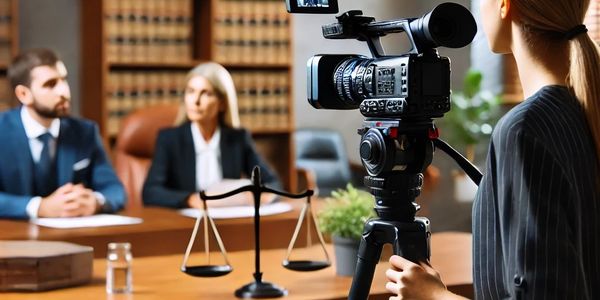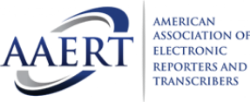Why Lawful Videography Is Essential for Accurate Court Recordings
The function of lawful videography in court settings can not be overstated, as it works as a necessary device for protecting the honesty of court documents. By catching both spoken and non-verbal communication, it boosts the quality of witness statements and mirrors the nuances of court room interactions. This thorough documents not only help in minimizing potential misconceptions but also supports appellate testimonials, thereby strengthening the judicial procedure. The implications of integrating lawful videography into basic courtroom methods elevate essential inquiries regarding its broader influence on the legal system. What might these effects involve?
Significance of Visual Proof
In the world of lawful process, the value of visual evidence can not be overstated. Aesthetic proof works as a powerful device in establishing realities, corroborating testimonies, and improving the general clarity of a case. This type of proof, which consists of photographs, video clips, and representations, can provide a tangible context that spoken descriptions often lack, consequently using courts and courts a more clear understanding of the situations surrounding a situation.
Furthermore, visual evidence aids in the retention of details. Human cognition is naturally aesthetic, and people are most likely to bear in mind and understand details offered in a visual style. In the court room, this can be important, as engaging aesthetic evidence can persuade viewpoints and strengthen the story offered by legal reps.
In addition, using aesthetic proof can reduce misconceptions and uncertainties that often develop from spoken exchanges. By giving a straight representation of events, aesthetic proof aids to eliminate subjective analyses and cultivates an extra objective assessment of the realities. The assimilation of aesthetic evidence right into legal procedures not just enhances the honesty of the judicial process however likewise improves the chance of attaining a just outcome.
Catching Non-Verbal Signs
Using advanced videography strategies can significantly enhance the capture of non-verbal hints during legal process. Non-verbal interaction, consisting of facial expressions, body language, and eye contact, plays a critical duty in communicating feelings and purposes that may not be clearly mentioned in verbal testimony. legal videography. Lawful videography employs high-def electronic cameras and strategic angles to ensure that these subtle cues are taped with quality and precision
The ability to examine non-verbal behavior can supply valuable context to declarations made during court sessions. For instance, a witness's reluctance or self-confidence can be translated through their posture or gestures, potentially affecting the jury's understanding of integrity. Additionally, using close-up shots can assist concentrate on an audio speaker's expressions, enabling a much more nuanced understanding of the statement.
Moreover, incorporating multiple video camera angles can develop a thorough sight of communications, highlighting dynamics in between events entailed. This complex method not just improves the accuracy of the court record however likewise aids in maintaining the honesty of the judicial process - legal videography. Eventually, recording non-verbal cues via legal videography cultivates a richer, extra total depiction of courtroom procedures

Enhancing Statement Dependability
The reliability of testament can be considerably boosted via using high-grade lawful videography. Video clip recordings function as an objective tool that captures not just the talked words of witnesses however likewise the subtleties of their shipment, including tone, pacing, and psychological expressiveness. This diverse paperwork provides a more clear understanding of the witness's reputation and purposes, which can be pivotal in legal procedures.
Additionally, legal videography decreases the possibility for misconceptions that may emerge from written records alone. When jurors other can observe a witness's behavior and body language combined with their testimony, they are much better furnished to assess the credibility and reliability of the evidence provided. This aesthetic context can strengthen the testimonial story, making it much more engaging and reliable.
Additionally, the visibility of a video clip recording can prevent prospective incongruities in testament. Witnesses might be more cautious in their statements when they recognize they are being taped, resulting in more accurate and genuine accounts. Overall, high-grade lawful videography boosts the integrity of testimony, making certain that the court has access to a complete and truthful depiction of the facts as shared by the witnesses.
Supporting Appeals and Reviews
Lawful videography plays an important function in supporting appeals and reviews by giving a comprehensive aesthetic document of court room process. This visual documentation records not just the spoken words of witnesses and lawyers but also the subtleties of body language, intonation, and courtroom dynamics. Such components can be essential in recognizing the context of testaments and arguments presented.
In the appellate procedure, where the emphasis gets on errors of regulation and step-by-step fairness, a video clip record can act as a vital tool for appellate courts. It makes it possible for courts to assess the initial trial context, making certain that choices are based on a full understanding of the proceedings. The capacity to aesthetically examine the demeanor of witnesses or the interactions in between parties can expose insights that written transcripts may neglect.

Additionally, lawful videography can aid in clearing up ambiguities in statements or procedural rulings, thus enhancing the basis for an allure. By providing a trusted, unbiased account of what taken place in court, legal videography not just sustains the stability of the lawful process yet additionally empowers all events entailed to make educated decisions concerning their situations.
Enhancing Court Processes
Enhancing court room efficiency, legal videography enhances procedures by providing prompt access to visual documents of process. This modern technology allows judges, attorneys, and juries to take another look at vital statement and proof, guaranteeing that all events have a clear understanding of the instance. By capturing the subtleties of spoken and non-verbal interaction, videography improves the document, making it much read the article easier to understand the context and weight of testaments.

Additionally, video recordings can facilitate remote participation in hearings, permitting higher adaptability in organizing and participation, which is specifically important in complicated situations including several stakeholders.
Verdict
In conclusion, lawful videography plays an important function in ensuring accurate court recordings by giving crucial aesthetic evidence that captures both verbal and non-verbal communication. This technique enhances the integrity of testimonies, supports appellate reviews, and streamlines court room processes. By cultivating a thorough see this understanding of courtroom characteristics, lawful videography eventually adds to more equitable judicial end results, reinforcing the stability of the lawful system and assisting in educated decision-making.